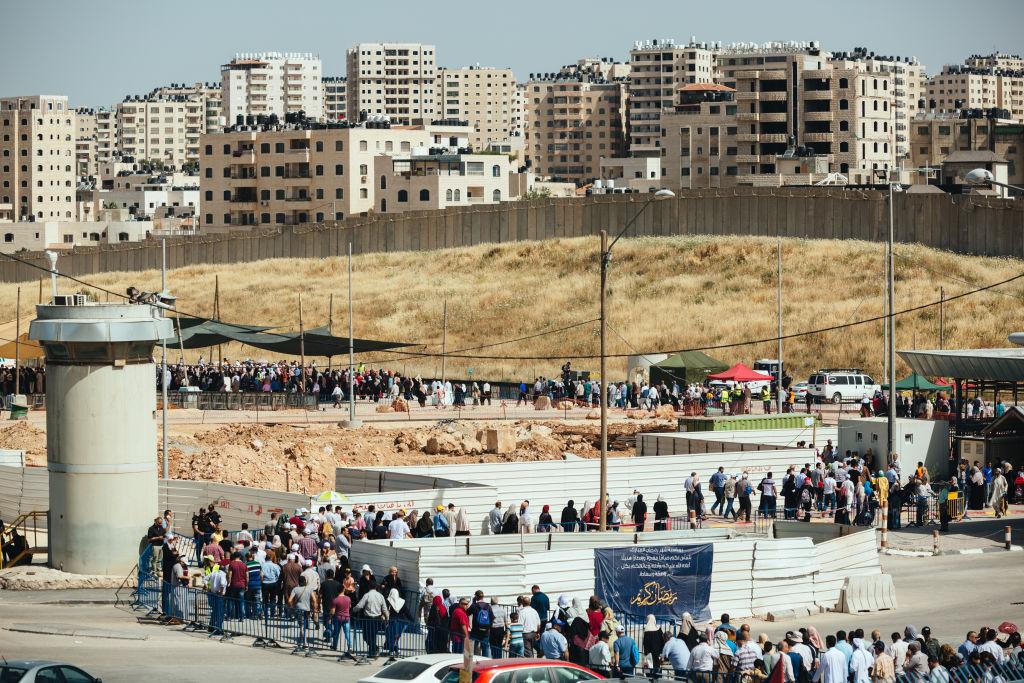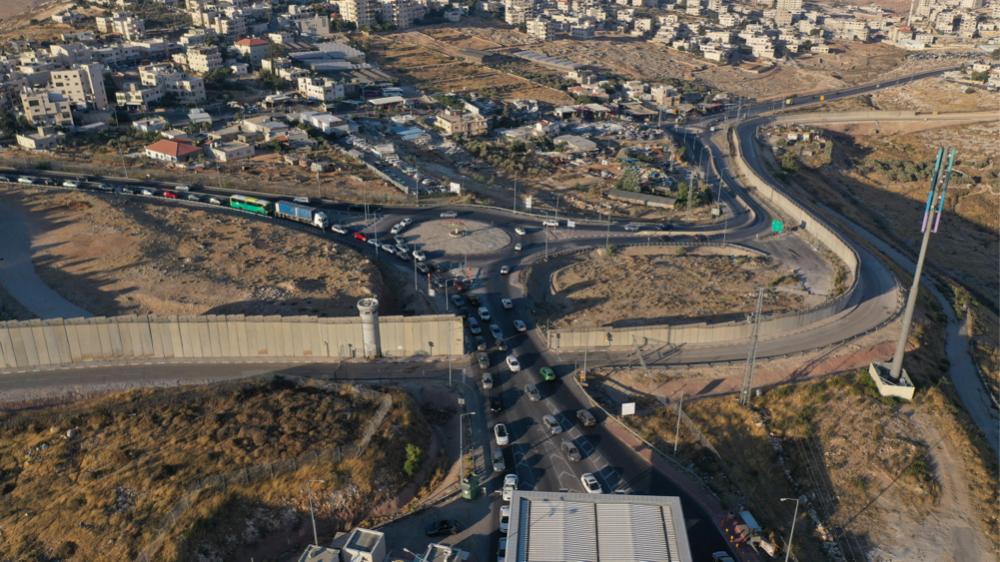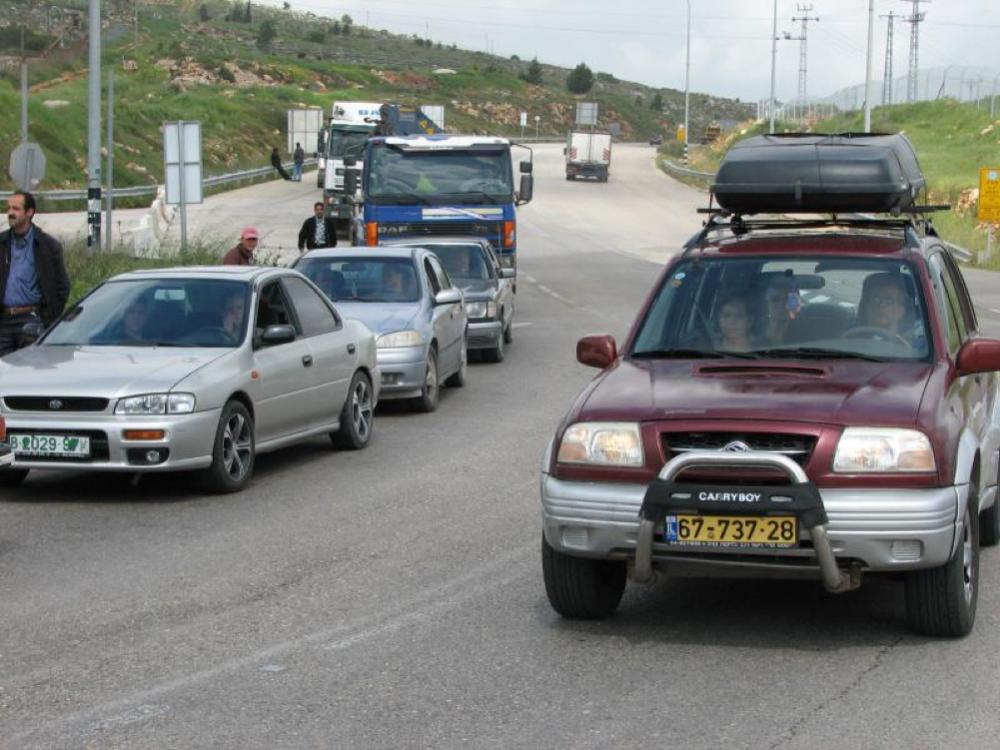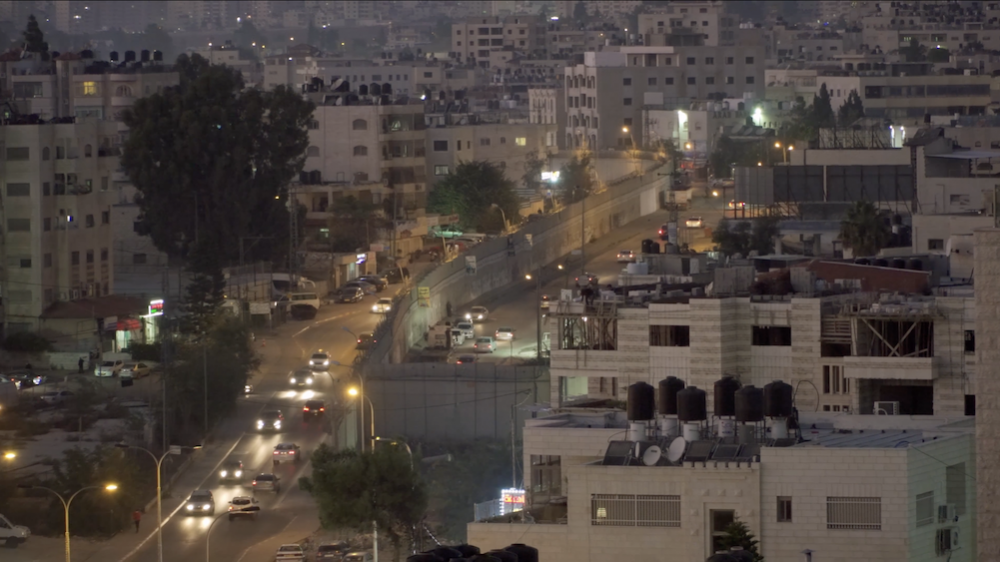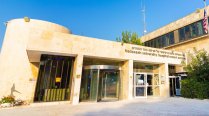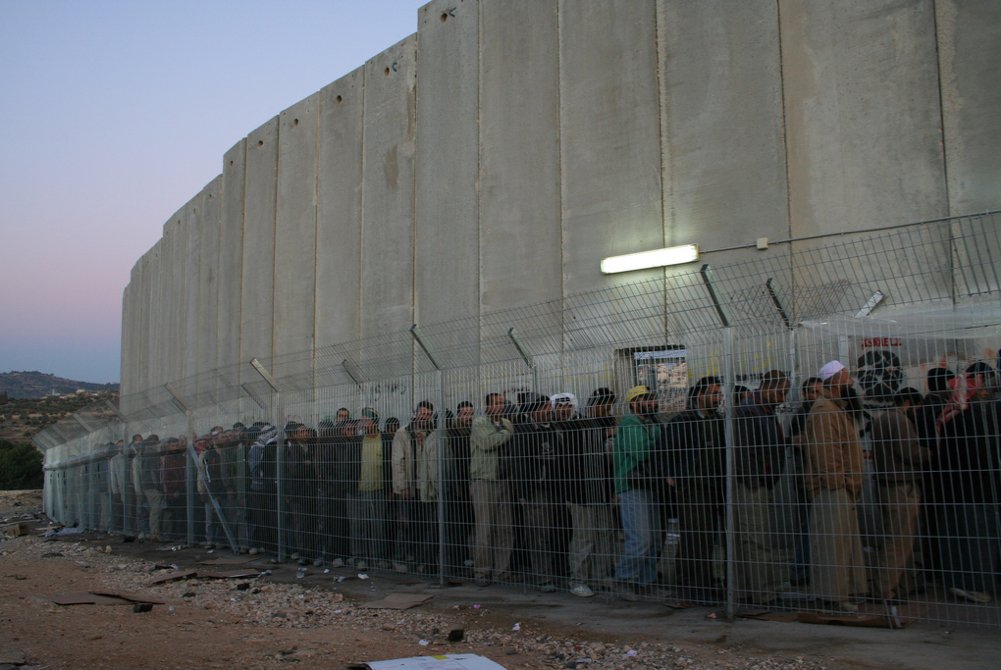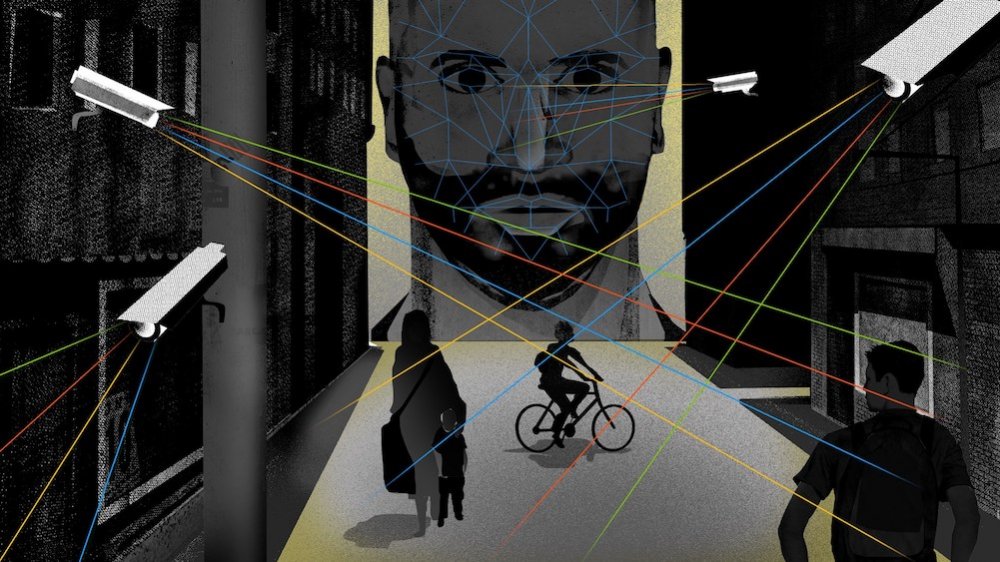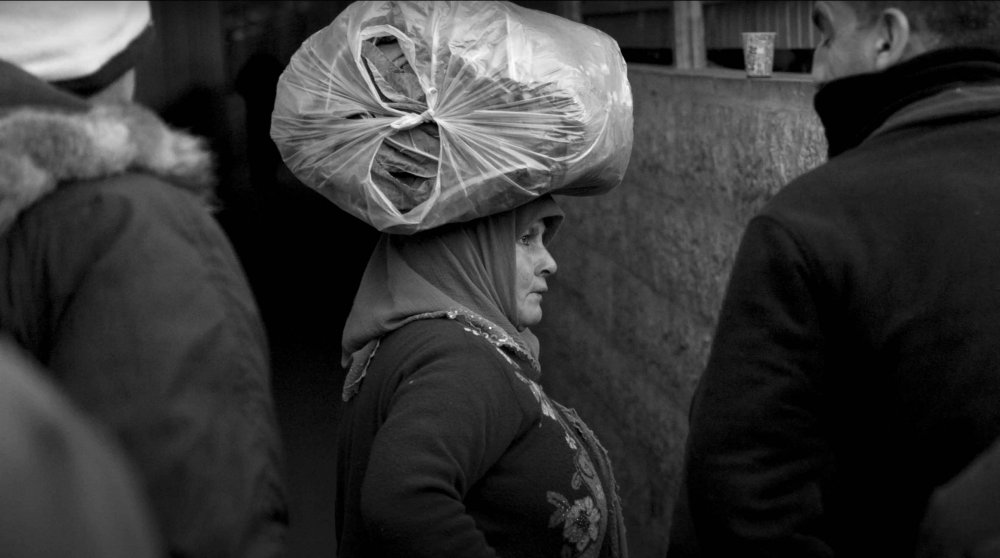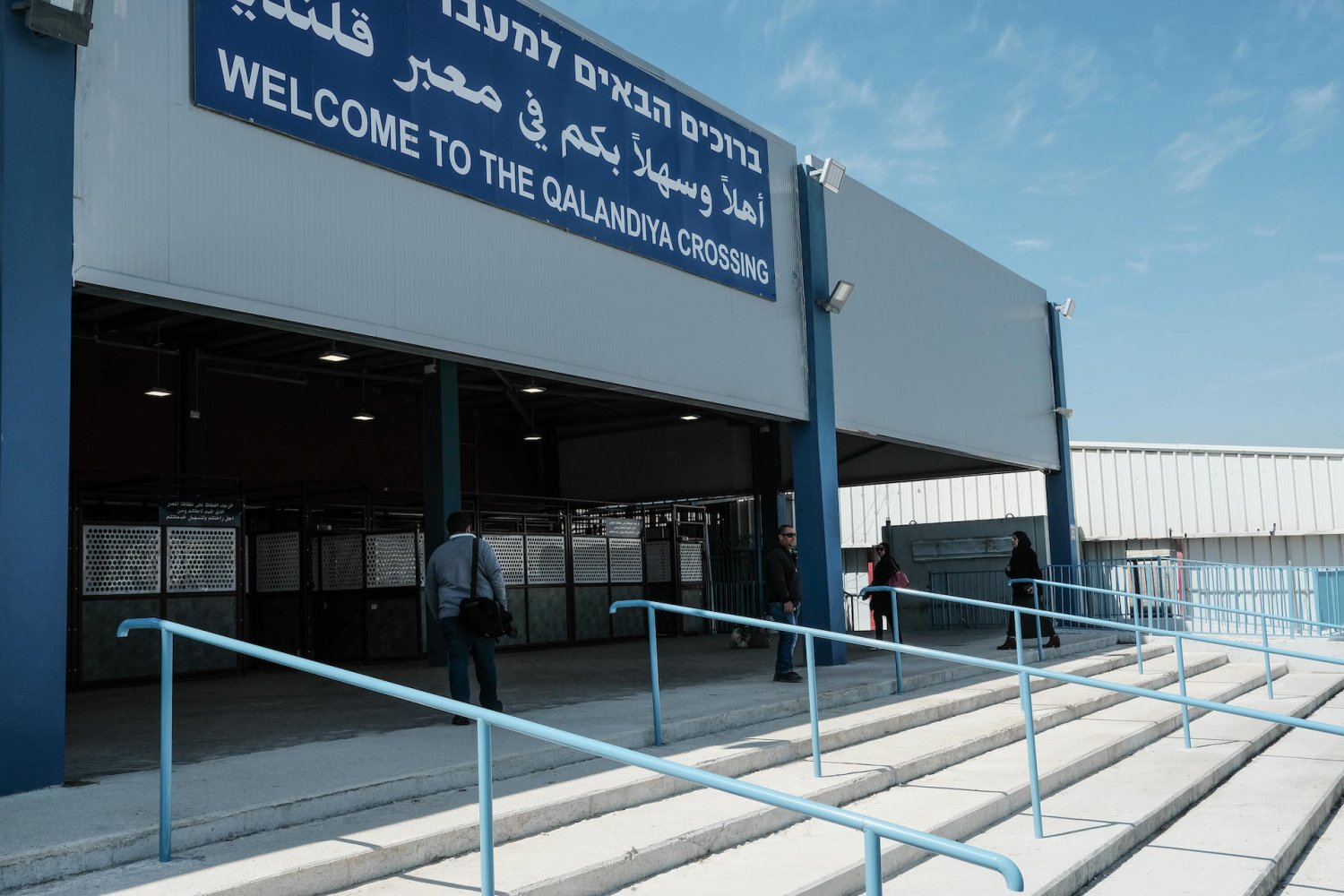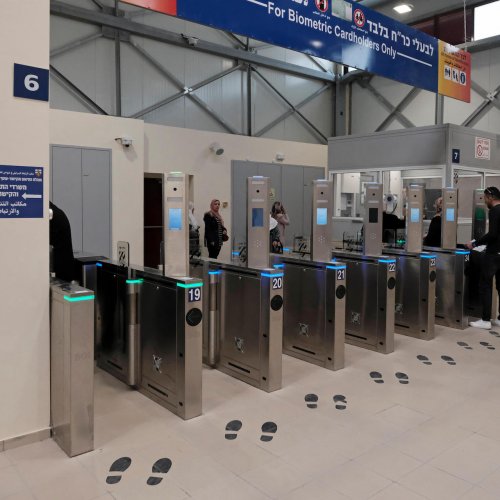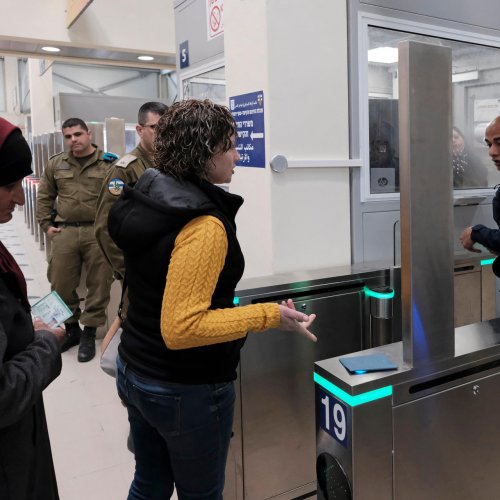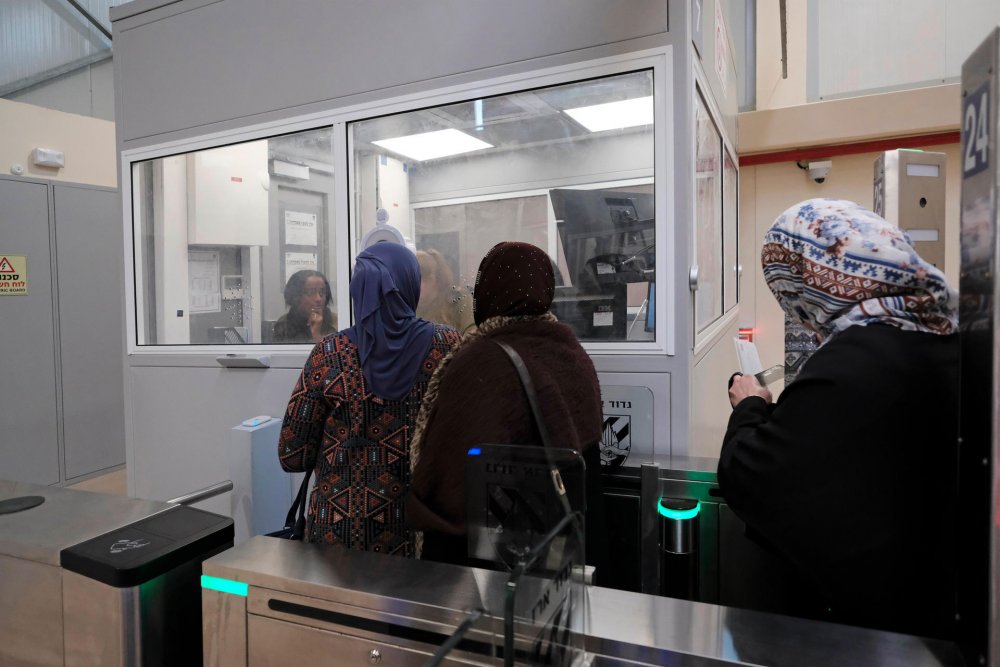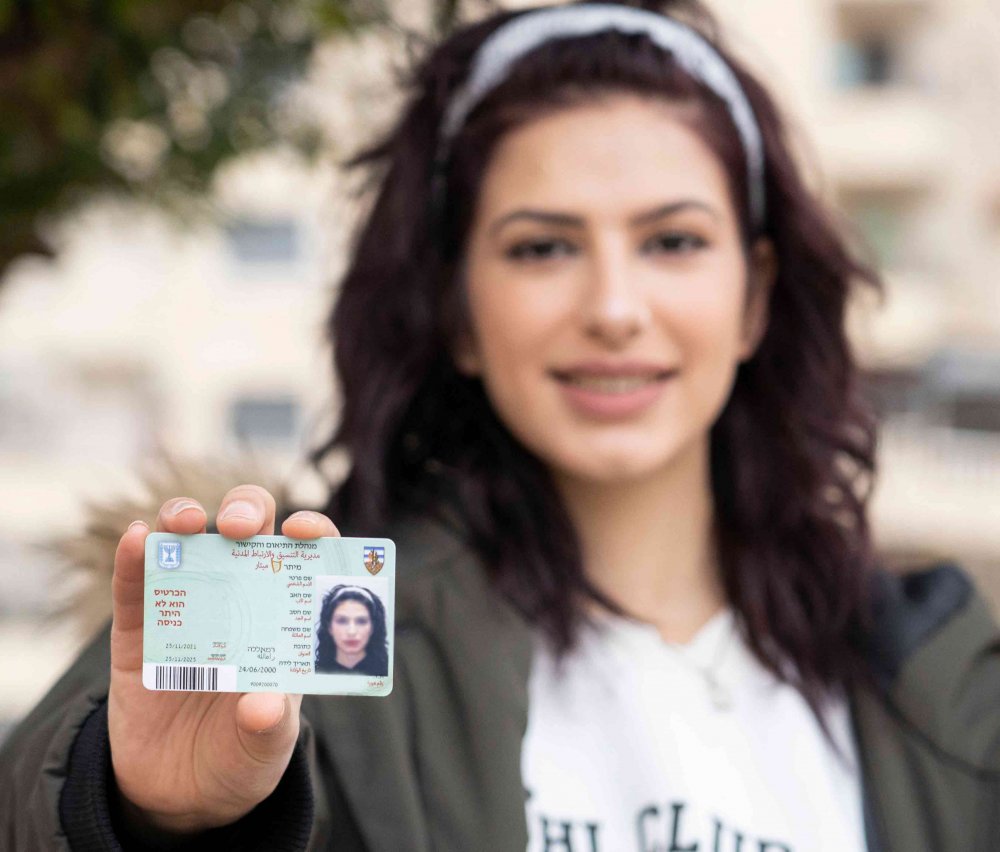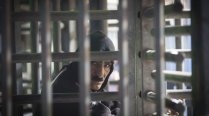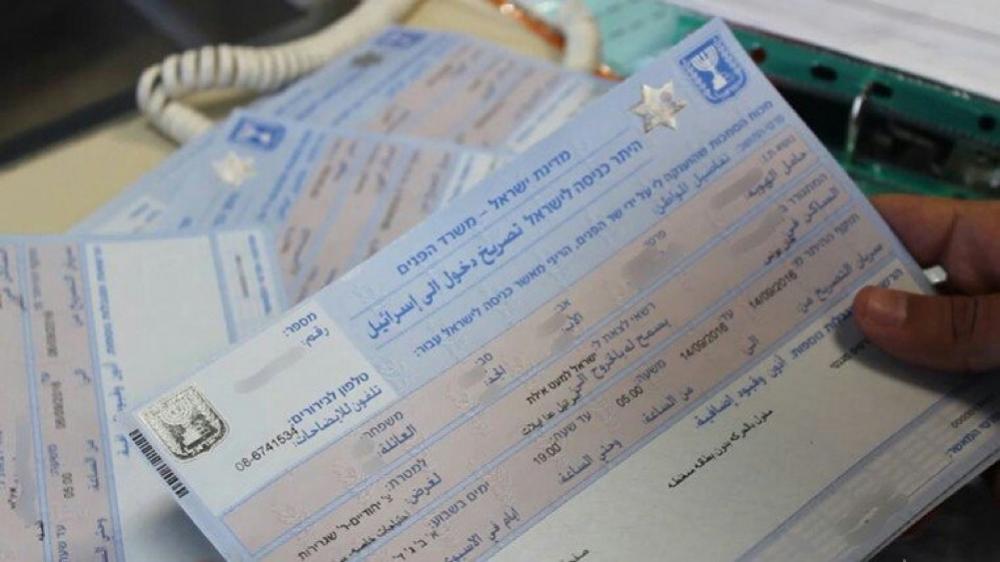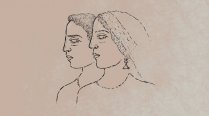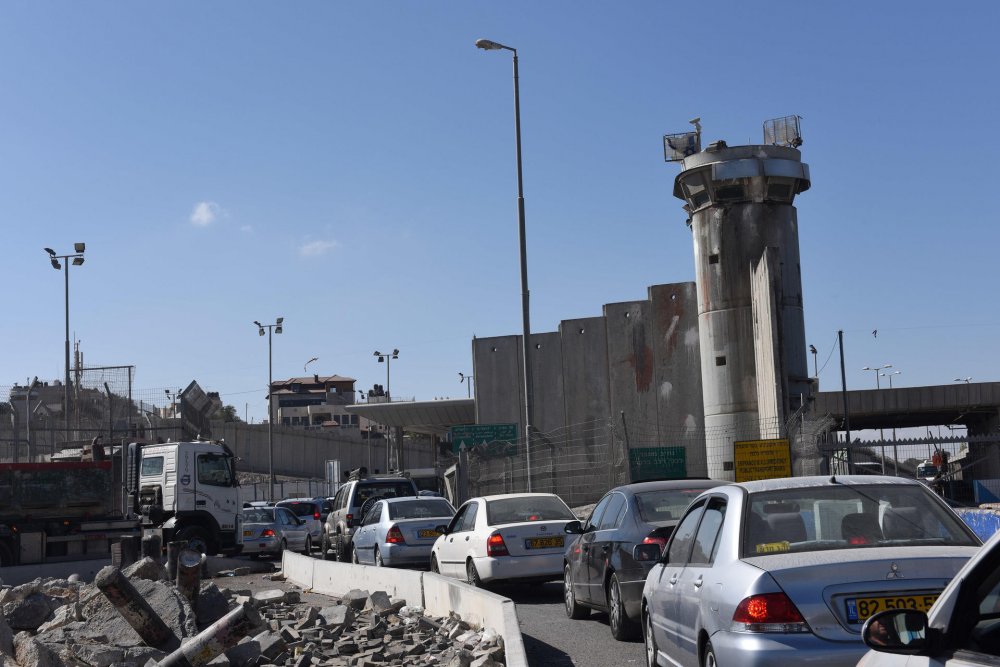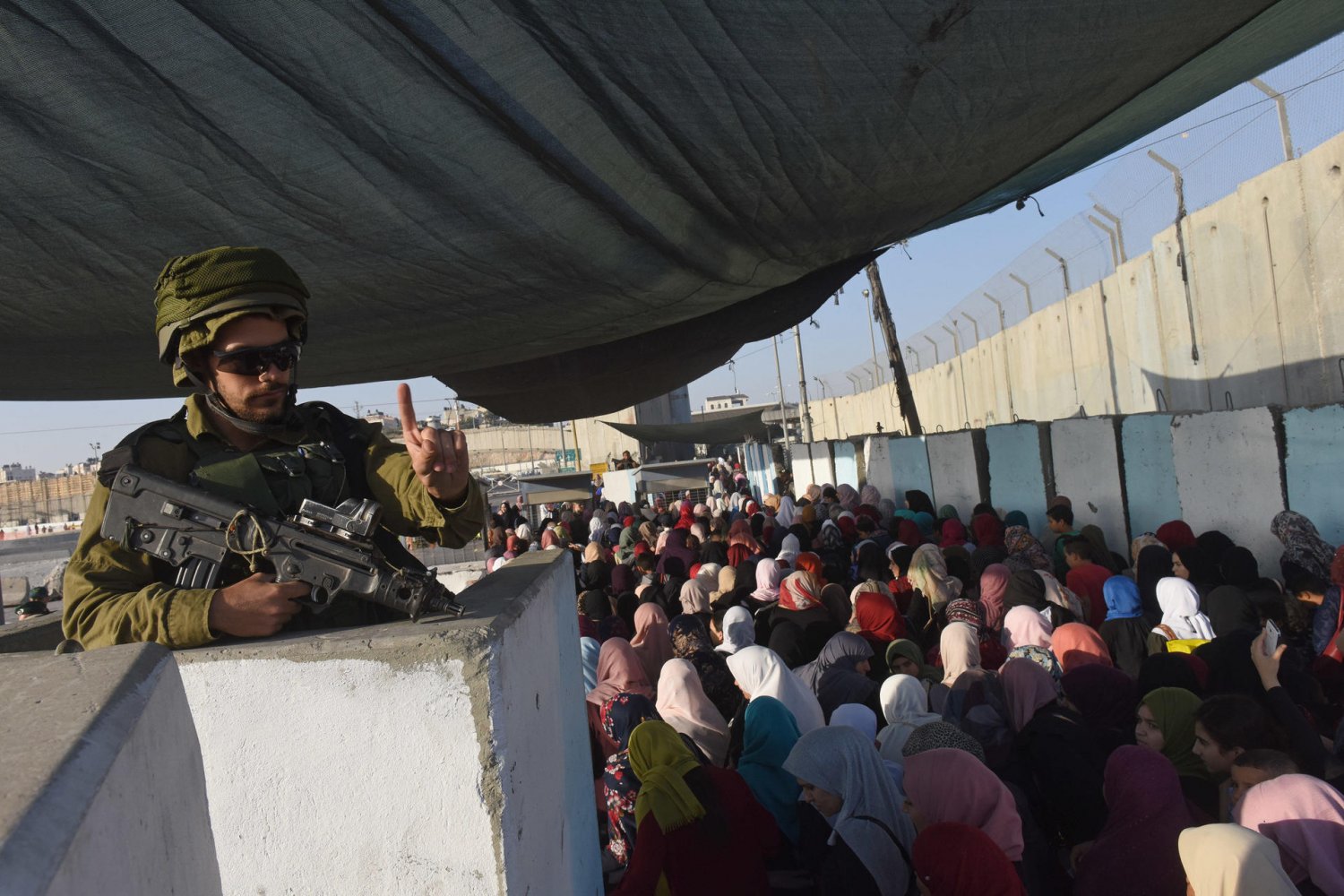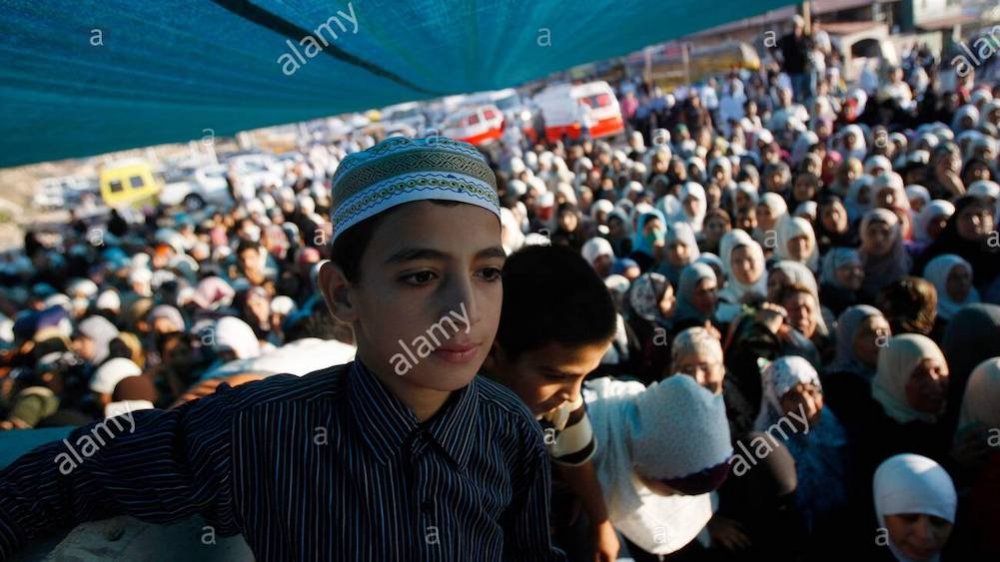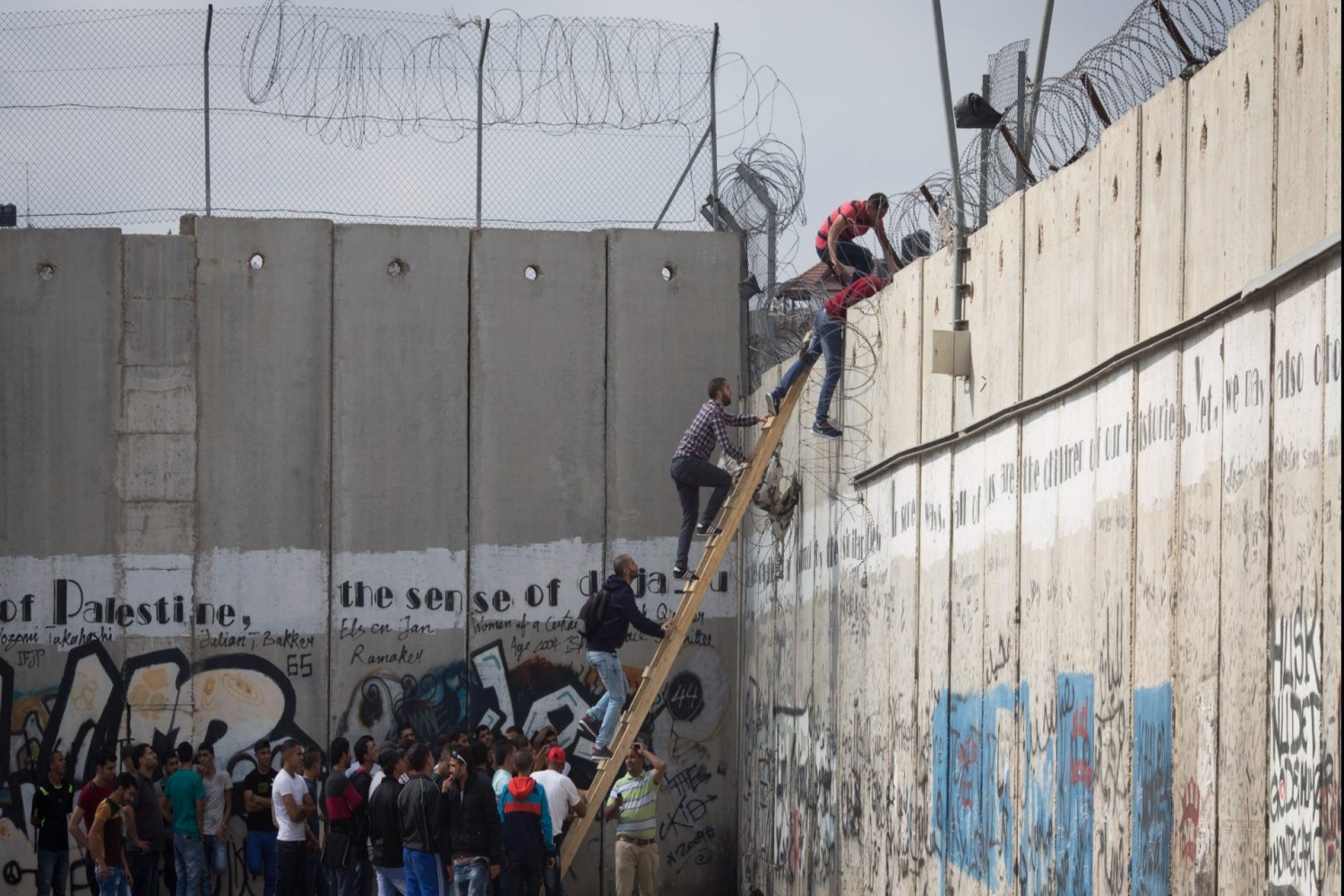From the time it occupied East Jerusalem in 1967, Israel began a long-term, gradual process of severing it from its Palestinian past, present, and future in an effort to ensure permanent Israeli sovereignty. One critical and often overlooked aspect of this severance is the closure of the city to the millions of Palestinians who do not have Israeli citizenship or permanent residency. Closure means preventing Palestinian civilians—in this case, those living in the West Bank and Gaza with Palestinian Authority-issued Gaza IDs—from entering Israel (and therefore Jerusalem).1 Israeli journalist Amira Hass reframes closure as “that euphemism for the policy of denying Palestinians their right to freedom of movement.”2
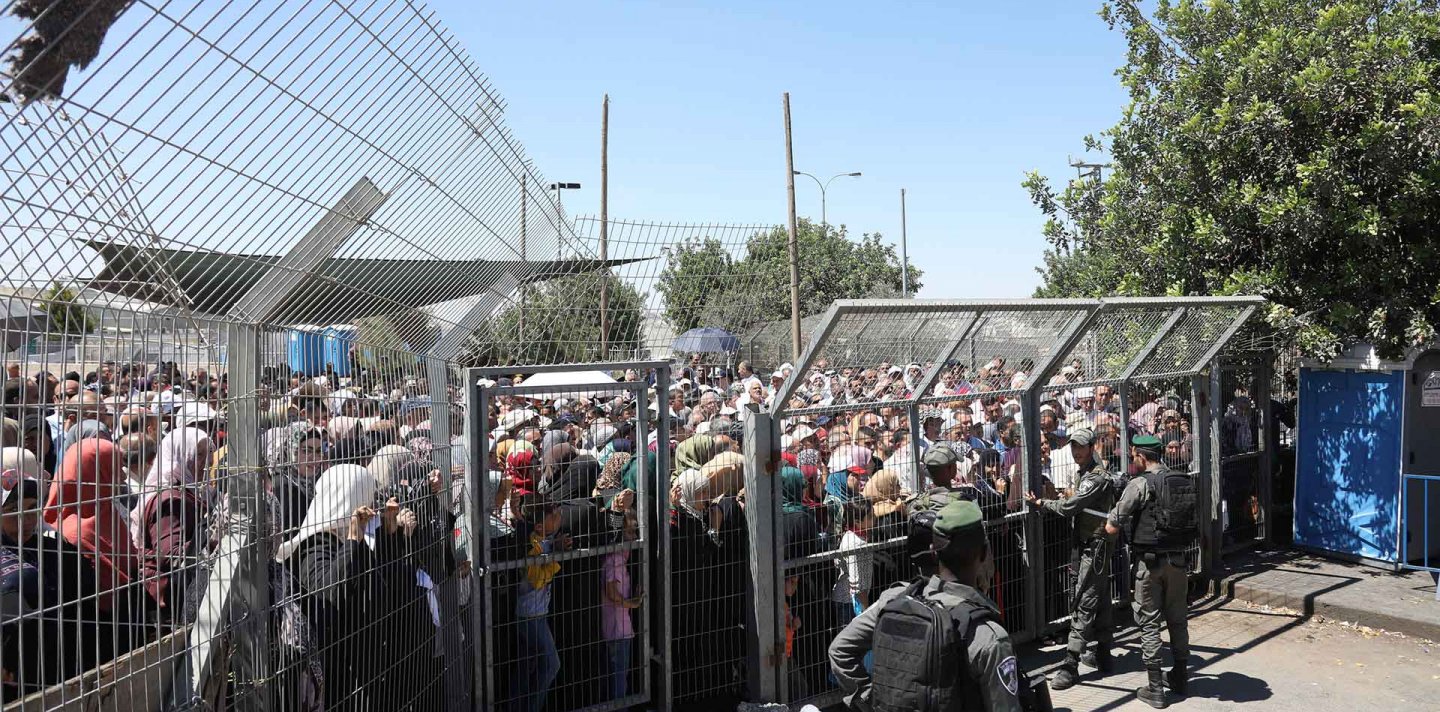
Credit:
Haidi Motola, Activestills
Jerusalem: A Closed City
Snapshot
For millions of Palestinians, Jerusalem is a closed city. Entry is largely forbidden and only occasionally allowed for short, defined periods with an entry permit granted at Israel’s behest. Only holders of Israeli IDs (whether Jerusalem residents or Israeli citizens) have the right to enter the city, and even then, they must pass through checkpoints. Closure has barred generations of Palestinians from experiencing the cultural and historic nexus that served as the region’s capital hub for hundreds of years. Since checkpoints have also been installed at points within the municipal boundaries of Jerusalem, closure also imposes grave hardships on Palestinian Jerusalemites with Israeli permanent-resident IDs who live on the “other” side of the checkpoints.
By contrast, Jews living beyond the city borders have free and open access to the city from wherever they arrive to it at all times and are never affected by the closure restrictions described here.
From its innocuous beginnings, closure or restriction of access to Jerusalem has been solidified, intensified, and expanded into a system of full, comprehensive control made possible by the Separation Wall and a complex, detailed, and harsh permit regime taking advantage of modern technological advances used to monitor people. As Palestinian American media scholar Helga Tawil-Souri has explained,
Closure is meant to deprive Palestinians of their right to free movement, stemming from a “pass system” first introduced in 1991. . . . The system turned a basic right into a coveted privilege with gradations: Palestinian society became (geographically) stratified on the basis of whether one had access, and in what portion, to the privilege of freedom of movement.3
Where previously East Jerusalem (and before 1948, Jerusalem as a whole) was the urban, political, religious, medical, educational, and commercial center of the larger Palestinian West Bank, today around 4.8 million Palestinians (around 2.9 million in the West Bank and 1.9 million in Gaza)4 are forbidden to enter Jerusalem at all unless they are granted an Israeli entry permit or are above a certain age in the case they are from the West Bank.5 Obtaining this permit is linked to a series of Israeli “security” measures, and granting this permit is the exception, not the norm. Under this regime, only Palestinian males from the West Bank who are aged 55 and older and Palestinian females who are aged 50 and older6 are allowed to enter Jerusalem and Israel freely without having to apply for a permit (provided they do not have a security record that has resulted in their being banned from ever obtaining a permit—see Banned from Entry).7 They can just show up at the checkpoint and show their IDs. This fact has created a situation in which young Palestinian people say, “The only reason we wish to grow older is to have the chance to see Jerusalem.”
1967–89: The Zone Is Closed, but the Closure Is Not Enforced
Laying the legal groundwork
On June 7, 1967, Israel occupied the West Bank, including East Jerusalem. Immediately on that same day, the army issued a proclamation conferring upon its West Bank area commander “all legislative, executive, and judicial powers over the occupied territory” and that “the laws that were in force up to June 7, 1967, shall remain in force as long as they are not contradicted by subsequent military orders.”8 This directive did not, however, apply to East Jerusalem since, in contravention of international law, on June 16, 1967, Israel annexed Jerusalem proper as it had existed pre-1967 (6.5 square kilometers) and then on June 24, 1967, unilaterally expanded the city area to include an additional 64 square kilometers (with 28 Palestinian villages) of the West Bank, thereby tripling the size of the city (see Where Is Jerusalem?).9
Again in contravention of international law, on June 27, 1967, Israel passed the Law and Administration Ordinance (Amendment No. 11) Law, which applied its own domestic law, jurisdiction, and administration to the newly expanded city (thereby canceling the local law that had previously been in effect)10 as opposed to the military law that prevailed in the rest of the now-occupied West Bank. However, the military legal system in the West Bank became the controlling factor that determined the ability of millions of Palestinians who did not hold permanent residency in Jerusalem to enter and exit the city.
Closure was a decisive means to effect Israel’s larger geostrategic goals—namely, to retain control over the entire city and never relinquish it, and to ensure a Jewish demographic majority in the city in order to entrench its permanent sovereignty there.11 All the subsequent gradual measures taken can be viewed in light of these overriding prerogatives.
First closure and census
On July 8, 1967, Israel declared the West Bank a “closed military area” from which entry and exit required the permit of the Israeli military commander.12 Israel controlled all points of entry into this zone.
Since then, Israel has gradually worked—whether by grand strategic design or by piecemeal reaction to events on the ground—to expand and intensify the severance of Jerusalem from the West Bank.
On September 27, 1967, Israel conducted two censuses in the newly occupied West Bank, including Jerusalem. This followed an earlier, rushed, and flawed census that had hastily been completed in late June, only days after the war’s end and before the city boundaries were even formally declared.
Upon the censuses’ completion, every Palestinian aged 16 and older who was enumerated in the census was entitled to receive a blue-cased identification card with a pink hue unique to permanent residents (see Precarious, Not Permanent: The Status Held by Palestinian Jerusalemites). Palestinians in the occupied West Bank and Gaza were given different IDs and had an altogether different legal status. This status meant Palestinians with Israeli permanent-resident IDs had different rights in terms of freedom of movement than did Palestinians with West Bank and Gaza IDs. One important difference was that those with Israeli permanent-resident IDs could freely enter Jerusalem, including West Jerusalem, and the rest of pre-1967 Israel.
These two events, the declaration of the West Bank as a closed military area and the census, “were the building blocks of one of the most elaborate systems for managing populations in the modern world, the Israeli permit regime for Palestinians,” according to Yael Berda, an Israeli sociologist and human rights lawyer.13
“Silent occupation”
In November 1967, Israel adopted then defense minister Moshe Dayan’s plan for a “silent” or “enlightened” occupation of the West Bank and Gaza.14 The plan distinguished between the occupied Palestinian Territories (oPT) and their Palestinian inhabitants. The Israeli government wanted to keep the land but not integrate its inhabitants, who were not even recognized as the owners of that land.15 According to this logic, the Israeli army permitted free movement of Palestinians from the West Bank and Gaza during the daytime under specific controls. Thus, the 1968 Entry to Israel Directive required Palestinians from the occupied West Bank and Gaza Strip who wished to enter Israel—for whatever reason—to obtain a permit issued by the regional military commander.16 In practice, due to the “open-door” policy (see below), people were allowed to move without any permit between the West Bank and Gaza, between the West Bank and Jordan, and from the West Bank and Gaza into Jerusalem and from there, into Israel. Their stay had to be short: Between 1:00 a.m. and 5:00 a.m., Palestinians were not allowed to stay inside the “borders of Israel,” so overnight stays were not allowed. This was almost the only restriction, other than limited numbers of people who were restricted for security reasons.
1968: “Open-door” policy
In 1968, Dayan first advocated the “open-door” policy, whereby Palestinians would be allowed to work across the Green Line in Israel and goods would be allowed to cross the Green Line in both directions with restriction on the entry of Palestinian products into Israel.17 This also allowed free passage between the West Bank and Gaza. In July 1972, this plan was made official when Defense Minister Dayan issued a “general exit permit” for Palestinians from the West Bank and Gaza allowing them to enter Israel for any purpose and remain there from 5:00 a.m. to 1:00 a.m. of the following day without an individual permit from the military.18 There were no checkpoints on the roads, but Palestinians from the West Bank and Gaza were clearly identifiable by their different-colored IDs and vehicle license plates.
The percentage of the Palestinian labor force from the oPT working inside Israel rapidly increased—from 6 percent in 1968 to 32 percent in 1974 and nearly 40 percent in 1987 before the First Intifada.19 Note that although free movement was allowed, the legal status of the oPT did not change; the territories remained a “closed military zone.” According to Berda, author of Living Emergency: Israel’s Permit Regime in the Occupied West Bank, “The general [exit] permit did not change the status of the territories as closed military zones, but the closure was not enforced.”20
1989–93: Personal Entry Permits and Checkpoints Facilitate Restriction of Entry for Specific Individuals
First restrictions on entry
In 1989, as the First Intifada (1987–93) was in its second year, Israel introduced new measures that enabled it to restrict some people from entering. In Gaza, Palestinians who wished to leave the Strip were first required to produce “magnetic cards coded with background security information.”21 Certain categories of people were not allowed to obtain these cards: released prisoners, former administrative detainees, and Palestinians who had been detained and released without charge.22 In the West Bank, rather than magnetic cards, initially Israel used a different color ID case (green versus orange) to differentiate those who were banned from entry.
In January 1991, on the eve of the First Gulf War, out of fear of a Palestinian reaction to it,23 Prime Minister Yitzhak Shamir ordered the closure of the oPT for the first time, for the duration of the war, and the general exit permit of 1972 was canceled. In its stead, a permit regime was introduced, which remains in effect today. This means that every Palestinian who wished to travel from the West Bank to Gaza, or from Gaza and the West Bank into Jerusalem or Israel, had to apply for and obtain a personal entry permit from Israel. This meant “denial [of freedom of movement] to many and freedom of movement for the few.”24
To enforce this policy in the Jerusalem context, Israel set up nine checkpoints, one on each main road entering the city. In effect, this closed the border between the territories and Jerusalem. From this point on, free access to the city would be limited to Palestinians carrying Israeli IDs only (i.e., Jerusalem residents and Israeli citizens). For the first time too, the closure also applied to foreign workers and international nongovernmental organizations. However, at no time did these restrictions apply to Jews, regardless of their place of residence.25
Initially, the direct impact of the policy change was not too apparent. For the first two years, Israel issued many permits for relatively long periods, and restrictions were not deeply felt.
1993: Official Full Closure Inaugurates the Severance of Jerusalem from the West Bank
The late 1980s and early 1990s heralded some major local and regional upheavals that caused Israeli leaders to take stock. These included the First Intifada, which broke out in December 1987 and continued into the early 1990s (some would even say until the signing of the Oslo Accords in 1993); the Iraqi invasion of Kuwait and the First Gulf War that followed; the expulsion of 200,000 to 300,000 Palestinians from Kuwait;26 the US administration’s announcement of a “new order” in the Middle East following the expulsion of Iraqi troops from Kuwait; the US push to use the political capital generated by the war to restart the Arab-Israeli peace process; the Madrid Conference (October 30–November 1, 1991); and a series of bilateral and multilateral negotiations that followed and extended into November 1993.
After 1991, Israel gradually started to reduce the number of approvals for entry permits. Even from the start, “granting permits was subject to security consideration, which meant approval by the Shin Bet [Shabak] and, from 1995 onward, the police as well.”27
On March 14, 1993, and after the death of 15 Israelis in different knifing and shooting attacks by Palestinians that took place inside the West Bank or Israel, Israel declared partial closure of the West Bank and Gaza until further notice. On March 30, the Israeli cabinet declared a full closure on Gaza, and the following day, on the West Bank. Not a single Palestinian could enter Israel and East Jerusalem except those holding Israeli ID cards (whether residents or citizens). No movement between Gaza and the West Bank was allowed.28 This full closure lasted for four weeks.
“Closure has been imposed as a temporary measure since 1991, just as checkpoints (in their modern manifestations) emerged as temporary a few years later. Palestinians’ experience has been subsumed by the ‘temporary’ that grows ever more permanent every year.”
Helga Tawil-Souri, “Checkpoint Time,” Qui Parle, 2017
Yitzhak Rabin, who was at the time serving as both the prime minister and defense minister, made a televised statement to the Israeli public in which he detailed his plan to reduce “Palestinian terror.”29 He declared the full closure of the oPT and the bolstering of Israeli troops in the West Bank and Gaza to “prevent friction” between Palestinians and Jewish settlers. The closure meant that between 100,000 and 120,000 Palestinian workers would no longer be allowed to enter Israel to work. Rabin said, “I am allowed to keep the territories closed as long as necessary.” At that point, Israel pivoted and started to employ foreign East Asian and East European workers, in order to make up for the loss of Palestinian labor.
This full closure not only prevented Palestinians with West Bank ID cards from entering Israel but also from entering Jerusalem. The 1993 closure inaugurated a new, intensified phase of the systemic severance of Jerusalem from the rest of the oPT. This meant blocking access to the economic, religious, cultural, educational, and health centers that Jerusalem uniquely offers for millions of Palestinians (see Only in Jerusalem). The days of free access to Jerusalem were over—any Palestinian with a West Bank ID caught in the city without a permit could now be fined or tried.30
Moreover, the closure also operated in the reverse: Israelis were now forbidden from entering the West Bank. In Israel’s eyes, this included Palestinians with Israeli permanent-resident IDs, so they were forbidden from entering the West Bank without special permits.31
1995–2000: Post-Oslo: The Separation Regime Takes Shape
The First Intifada made it clear to Israel that the colonization strategy for the oPT was no longer viable. After some years, Israel opted for separation instead—“We [Israelis] are here, they [Palestinians] are there.”32 Neve Gordon, an Israeli professor of law who has analyzed Israel’s occupation, terms this a “reorganization of power rather than its withdrawal,” and “occupation by remote control.”33
The Oslo Accords were “an attempt to outsource responsibility for the occupied population to a Palestinian Authority.”34 In 1995, with the massive delegation of governance of the territories from the Civil Administration to the Palestinian Authority (PA) that emerged from the Oslo Accords, Palestinians with West Bank IDs would now apply at nine District Coordinating Offices (DCOs) for entry permits. The magnetic card was introduced as a prerequisite to applying for an entry permit, and became a major tool of control and information gathering.
With the massive pullback of the Israeli military from Palestinian cities, Israel needed an alternative source of information on the ground. Thus, from 1994 with the establishment of the PA and the permit system, and 1995 with the introduction of magnetic cards, Israel had the leverage to recruit the eyes and ears on the ground that it needed. Palestinians with West Bank IDs (which now became Palestinian Authority IDs, issued by the PA under Israeli’s approval) had one more layer of permission and surveillance to plow through in order to enter Jerusalem.
In 1996, the first internal closure was imposed on the territories and entry to Israel became even more restricted.
2000–2005: The Closure System Expands and Extends to Control Movement within the West Bank As Well
The closure that was first imposed in 1991 was intensified in 2000, when the Second Intifada (2000–2005) erupted. Checkpoints began appearing everywhere and controlling Palestinians’ movement even inside the occupied West Bank, including physical blockades around villages and banning of Palestinian vehicles on roads (see Checkpoints Part 1: Severing Jerusalem). As of May 2002, the permit system covered all movement of Palestinians in the West Bank, including their vehicular movement. By 2004, there were 48 staffed permanent barriers (28 on the Green Line controlling entry to Israel), 7 manned control towers, and 607 blockades around villages.35
From October 2000, as well:
The Shin Bet’s [Shabak’s] control over the permit regime grew exponentially . . . . The expertise of determining whether Palestinians were friends or foes became an unassailable form of power. The definition of “security risk” itself was expanded to include many residents previously exempt. By 2001, the definition broadened from one devised to cope with a state of emergency into a permanent and institutionalized classification in the Population Registry.36
Adding yet another asphyxiating layer to the city’s closure, the construction of the massive Separation Wall, including the “Jerusalem Envelope,” began in 2002.
For many Palestinians with Palestinian Authority IDs, reaching Jerusalem became possible only in their dreams. Palestinians on both sides of the divide—those with and without Israeli IDs—were growing ever more remote from one another, even within extended families. Even Palestinians with Israeli IDs had reason to think twice before venturing outside the checkpoints and leaving the city. A university employee recalled one student’s description of her daily bus ride from her home in East Jerusalem to her university in Bethlehem, through the checkpoints and back:
The worst part is coming in the bus up to the checkpoint and wondering, what will it be like this time? Is the soldier just going to wave the bus through? Is the soldier going to take a look at our IDs? Or is the soldier going to take all our IDs and make us sit there for an hour, or an hour-and-a-half, while each of them is checked? Are we going to be herded off the bus and made to stand in the sun while all of our IDs are checked? Or are we individually going to be interrogated? Are we going to be strip-searched?37
In this period, Israel began constructing the monolithic Separation Wall (see The Separation Wall) that snakes throughout the West Bank and betwixt and between Jerusalem neighborhoods. This wall, combined with the checkpoints and the permit system, enforces virtually a total closure—shutting Palestinians with Palestinian Authority IDs out of the city and making it much more cumbersome and difficult for those with Israeli IDs to engage with areas outside of it.
2005–19: Separation Wall Entrenches Closure as Part of a Permanent Separation Regime
In 2003, the Israeli army introduced a program called “Another Life.” The stated goal was to “minimize the damage to the Palestinian life fabric in order to avoid the humanitarian crisis that will necessitate the IDF to completely take over the provision of food and services to the Palestinian population.”38 As part of this program, which fell right in line with the separation regime paradigm, Israel undertook a worldwide study of border control technologies to identify ways to make the checkpoints “more efficient” and supposedly improve the Palestinians’ experience of passing through them. It was also, no doubt, in preparation for how the continued control of Palestinian movement would operate once the Separation Wall was constructed.
The conclusion was that checkpoints should be recategorized into two types: “border” checkpoints that ostensibly control entry into Israel (although the majority are located inside the West Bank and not on the Green Line), and “internal” checkpoints that are located deep within the West Bank and control passage from one Palestinian part of the West Bank to another.39
As part of this plan, “12 permanent ‘closure checkpoints’ were to be built along the length of the wall, to be operated by the Israeli Airport Authority as if they were international borders.”40 This despite the fact that these “terminals” are located inside the occupied West Bank, on territory “that has never been acknowledged as Israeli land,” even by Israel itself, in order to “define the future border in a unilateral way.”41 Moreover, the borders were not separating between two sovereign, independent countries but rather between two areas under complete Israeli control.
The rebranding of checkpoints as “terminals” was intended to “normalize” the checkpoints and “redefine them as civilian border-crossing points, identical to any other international terminal used around the world.”42 As explained by political scientist Daniela Mansbach, this was an effort to “normalize violence” and make a system of imposed military control appear to be routine. Appearances notwithstanding, as Mansbach explains, these “terminals” operate in an area where civil law has long been suspended, replaced by a “legal order based on military dictates,”43 that is, military law. In this zone, civil liberties are nonexistent. The soldiers deployed at the checkpoints are “the sole authority for controlling and establishing the rules there,” which “not only change every day, but a few times per day, without warning or explanation. As a result, no one—neither the soldiers standing at the checkpoint nor the Palestinians—knows in advance who will be allowed to cross on any given day.”44 There is no accountability, and “Israeli checkpoints are hidden, impenetrable to an external civilian gaze.”45
Such new “terminal” checkpoints began to be operational in 2004. The Qalandiya Terminal that controls passage between Ramallah and Jerusalem was opened in 2005. Despite an attempt to portray a “normal” “border crossing” existing within an authority accepted by those affected, the structure of the new terminals and the dehumanizing control systems embedded within them remained firmly in place. To begin with:
Architecturally, the “terminals” were designed to look like high-security offices or airport terminals. This new design has created a space where no guns or soldiers can be seen from outside the “terminal”—or even from inside, until one is standing directly in front of the checking booth. . . . The architectural changes at the “terminals have limited, rather than enhanced, the possibility of viewing what happens inside them. . . . no one else besides the individual who is being checked at a given moment can observe the process.46
Hidden transactions remove any possibility of accountability, even from on-site observers. Indeed, as Mansbach experienced on the ground: “Their architecture . . . makes resistance almost impossible; the high walls and fences prevent the activist from seeing or communicating with the Palestinians who are trying to cross the ‘terminal’ or observing the events they are experiencing.”47
Inside, the flow of movement and interaction is explicitly designed to dehumanize. As described by Eyal Weizman in his book Hollow Land:
The new [terminal] system includes a labyrinth of iron fences that channels passengers en route to Jerusalem via a series of turnstiles. All commuters must go through five stages: the first set of turnstiles, the X-ray gates, the second set of turnstiles, the inspection booth and an X-ray machine for the bags. This entire process is captured by a dense network of cameras, and the passenger is given instructions via loudspeakers. From their protected booths, Israeli security personnel operate the revolving gates remotely, regulating the rate of passenger flow. The inspection booths are encased in bulletproof glass. The glass is so thick that it tends to reflect the outside light rather than letting it through, thereby obscuring the security personnel inside, and effectively functioning as a one-way mirror. Palestinians must insert their identity cards and travel permits into a small slot under the windows. Communication takes place through push-button speakers. Still in the process of installation, new detectors operated by biometric cards will eventually make even this minimal interaction redundant. After crossing this checkpoint, the passenger is allowed through another turnstile and then through the Wall.48
Soon after, a new biometric card was introduced, which uses faceprints, handprints, fingerprints, and iris scanning to confirm identity of the person passing through the crossing point. Thus, Palestinians rushing to get to work or school are sharing their uniquely identifiable bioprints with the Israeli Population Registry, which can then freely use it for surveillance in other arenas.
The new checkpoint/terminal concept was part of a larger effort to “rebrand” occupation in an attempt to normalize it. The terminals were proudly trumpeted as “humanitarian,” using “humanitarian technology.” Qalandiya and the other terminals have a “humanitarian lane” which is supposed to provide a less crushed crossing experience for those in wheelchairs, the elderly (people over the age of 60), and parents with baby strollers.49
Despite the terminology and the effort to make such terminals appear to be “customer-facing,” the experience was anything but humanitarian, and the grim underlying logic of the closure remained firmly in place.
The fate of the “humanitarian lane” perhaps reveals the real story: checkpoint observers consistently report that it is typically closed and rarely used.50
2019: New “Crossings” Opened; System Remains Unchanged
In 2019, this rebranding accelerated with the construction of two entirely new “crossings”: one at Qalandiya, the main checkpoint that Palestinians use to enter Jerusalem from Ramallah, and the other at Checkpoint 300, the main access point into Jerusalem from Bethlehem.
Although these “crossings,” built by the Israeli army and the Civil Administration, are easier and more convenient to pass through, replacing five human-staffed windows with 27 automatic electronic gates51 and reducing the passage time from several hours to 5–10 minutes, they do so at an ominous cost in surveillance capacity. To cross, a Palestinian must pass through an electronic gate that both requires biometric data (embedded in the magnetic card that must be presented to open the electronic gate) and a facial photo to verify identity via facial recognition. These two new “crossings” were only the beginning—Israel is in the process of installing facial recognition software at all West Bank crossings that Palestinians must use. By contrast, “such screening is not used at separate West Bank crossing points that Israelis drive through.”52
The mass capture of biometric data by an occupying military power is particularly concerning given that this facial recognition software, developed by AnyVision, the Israeli facial recognition start-up, has also been reported to be used in “a secret military surveillance project throughout the West Bank . . . . nicknamed ‘Google Ayosh,’ for which the company won a top defense prize in 2018.”53
More importantly, the closure and permit system that Israel uses to control and constrict the mobility of millions of Palestinians remains unchanged; the control over all decisions on who can move, where, when, and how, remains exclusively in Israel’s power without accountability or appeal; and the hundreds of thousands of Palestinians who are blacklisted cannot even contemplate attempting to pass through these “crossings” because they would never qualify for a magnetic card in the first place (see Banned from Entry).54 The “modernization” is only cosmetic; the closure system continues to keep millions of Palestinians from reaching Jerusalem.
Today: What Palestinians with Palestinian Authority ID Cards Must Do to Access Jerusalem
Yehudit Keshet, author of Checkpoint Watch: Testimonies from Occupied Palestine, describes the process of applying for permits:
The process of acquiring a permit may be likened to a game of snakes and ladders. The applicant scores one success, only to be plunged back to the beginning of the process by refusal at the next. Several accessories are required for this game, a game whose outcome is never assured, one that can become a matter of life or death.55
Obtain a magnetic (“smart”) card
The first step is to apply for a magnetic (“smart”) card. This certifies that the holder has received “security clearance” from the Shabak and is not wanted for or suspected of intending to commit some offense. The application, approved through the local Shabak office via the DCO, takes 10 days to process.
Magnetic cards are a requirement for most types of permits. Patients who require medical treatment and the first-degree relatives56 who accompany them can get permits without smart cards. Others who wish to visit a patient in Jerusalem must first obtain a magnetic card.57
No reason is given for refusal. If the application for a magnetic card is denied, the applicant may not be allowed to reapply for several years (see Banned from Entry).58
Acquire an entry permit
Issuing entry permits for Palestinians from the Gaza Strip and the West Bank is the responsibility of the Israeli Civil Administration, or what is referred to as the COGAT (Coordination of Government Activities in the Territories). The COGAT, a branch of the Israeli Ministry of Defense, is responsible for the implementation of the civilian policy and the security coordination of the Israeli government in the West Bank and Gaza. Palestinians must apply for entry permits in the offices of the COGAT that are generally called “Office of District Coordination and Liaison Office—DCL” (Matak in Hebrew; commonly called DCO in English; and Irtibat, or Irtibat ‘Askari, in Arabic). There are several Israeli DCL (IDCL) offices in the West Bank and two in Gaza, although Erez crossing in the north is the central point of entry and exit for pedestrians from Gaza and the only place that Palestinians in Gaza can apply for entry permits to Israel.59 Since the Oslo Accords, the permit application is first made through the Palestinian DCL, acting purely as a conduit for the IDCL.
To start, even reaching the nearest DCL office may require crossing one or more checkpoints. Once there, the experience is anything but inviting:
Tamar Goldschmidt of Checkpoint Watch has videotaped the application process at two West Bank IDCLs. Each video, shot in real time, documents the trying physical conditions: endless waiting periods, lack of adequate shelter, toilets and refreshment facilities. Clerks sit behind narrow slits of the unreceptive reception counters at which the plaintiff has no redress, no agency and very little hope. Applicants must be constantly on the alert to spot the rapid opening and closing of the counters. If missed, the opportunity is lost for the day. Complaints usually result in the closing of the DCL for several hours, or for the remainder of the day. The waiting seems the longer because of the uncertainty as to when it will end and what its results will be. The very request for a permit is regarded as suspect, as insolence.60
Adding insult to injury, there is a good chance you could be asked to collaborate in return for the permit. Declining such an “invitation” could get you blacklisted (see Banned from Entry). In total, the permit application generally takes from two days to around two weeks.
The issuance of entry permits for Palestinians is based on the “Citizenship and Entry to Israel Law—2003,” but is the responsibility of another office of the COGAT. All criteria set by Israel for the movement of Palestinians and applying for the permits are detailed in a document called “Unclassified Status of Authorizations for the Entry of Palestinians into Israel, Their Passage between the West Bank and the Gaza Strip and Their Travel Abroad.”61 This document is periodically updated and published by the COGAT only in Hebrew. As of this writing, the document was last updated on February 19, 2020.62 An unofficial English translation (not necessarily the most recent) is available on GISHA’s website.63
In reality, according to Israeli human rights organization B’Tselem, “Israel grants permits sparingly, and does not publicize the criteria for obtaining them.”64
Apply for one of the designated permit types
According to this COGAT “Status of Authorizations” document, there are eight different categories of permits divided according to the applicants’ needs. Therefore, only needs falling into one of these categories can justify applying for an entry permit:
- Health needs
- Legal needs
- Education needs
- Work needs
- Economic needs
- Worship and religious needs
- Senior Palestinian officials (VIPs)
- Special needs
Under each category, there are several types of permits. In fact, there are more than 100 types.65
The most common ones are those allowing their holders to work in Israel, but only within a small number of defined professions (construction, home construction, and agriculture have the largest quotas of any permit type). Others are health permits, which include permits for patients who need treatment in Israeli hospitals or Palestinian hospitals inside Jerusalem, and they also include permits for the first-degree relative who accompanies the patient. In the case of worship permits, there are permits given for Christian Palestinians during Easter and Christmas, and others given for Muslim Palestinians during the holy month of Ramadan and the Eid al-Adha holiday.
If a permit is granted, it specifies the duration of stay; whether the permit covers the person, a vehicle, or both; expiration date for the permit; which zone of Israel he or she is restricted to visiting; and in many cases which checkpoint the holder is required to use (see Checkpoints).
Don’t expect to have a say in the permit duration
Different types of permits vary in duration from single-day entrance to longer-term permits for medical treatment at hospitals, for example. The standard permit specifies the exact time the holder is allowed to be in East Jerusalem (or Israel more generally), from 7:00 a.m. typically until 7:00 p.m., and in some cases until midnight. Workers inside Israel usually hold permits that are valid for a couple of months, but they are only allowed to enter on a workday and during the specific hours indicated in the permit. Those who want permits that allow for an overnight stay must indicate this in their application. However, overnight stays are rarely allowed. The permit also specifies the exact allowed zone (e.g., Jerusalem zone only), which prevents the holder from going any further into the country than absolutely necessary.
Leave the car behind
As of 1992, the entry permits covered only the person, not his or her vehicle. Until today, a separate entry permit is required for a vehicle. In any case, with only rare exceptions, cars with green license plates from the oPT are not allowed into East Jerusalem or Israel.66 A Palestinian with a Palestinian Authority ID who holds a permit to enter Israel is not allowed to drive any car, his or her own or another’s, inside Israel. Thus, all checkpoints controlling access into Israel (so-called border checkpoints, even though they are located within the West Bank and not on any official border) can only be crossed on foot by holders of Palestinian Authority IDs. Beyond the checkpoint, if wheels are needed, the driver must have an Israeli ID.
However, in their attempt to reduce potential resistance through presenting so-called economic easing steps, the Israeli Civil Administration now allows a small number of specific people to enter Jerusalem with their Palestinian-plated cars. This mainly includes holders of the so-called VIP documentation. VIP refers to Palestinians holding senior positions in the PA who can apply for a one-year entry permit that also allows them to stay overnight in Israel and to drive their own Palestinian car inside Israel. A strict quota limits the number of people who can hold such a permit.67
The permit allowing the holder to drive one’s own car can also be granted to senior Palestinian doctors who work either in Israeli hospitals or in Palestinian hospitals in East Jerusalem.
This is not to say that some checkpoints controlling access into Israel do not have car lanes—they do. But only cars with Israeli yellow plates driven by foreigners holding foreign passports or Israeli IDs are allowed to use them. There are also “border” checkpoints that are designed only for cars. The Tunnels, al-Walaja, and Hizma are examples. Jewish settlers can drive freely through these checkpoints without any type of permit or security check. Palestinians with Israeli IDs who drive Israeli yellow-plated cars also have this privilege, in theory. In actuality, they are frequently stopped, but the decision to stop and check them relies purely on the soldier’s instinct.68
But the only way a Palestinian with a Palestinian Authority ID can cross these vehicular “border” checkpoints is in a public Palestinian bus. Everyone on the bus is subject to a documents check.
Quotas and Other Limitations
As detailed in the COGAT “Status of Authorizations” document, some types of permits have specific quotas. For example, the number of permits allowed for teachers working at schools in East Jerusalem, divided by religion, is 400 (Muslim) and 150 (Christian). The number of Palestinians allowed to have permits to pursue graduate studies in Israel is only 50 (and a “smart card” is required). Workers in the health sector in Israel are limited to only 270 permits. Construction workers, by contrast, can hold as many as 26,000 permits, and home construction workers, 39,300.69
As well, some of the categories have detailed other limitations. For example, of those 120 persons who are qualified to receive an entry permit for VIP-1 (senior positions close to the president), only 50 percent (60 people) will be granted authorization to drive a vehicle into Israel. For the level of VIP-2 (quota: 240), the number of permits for vehicles drops down to 30 percent (72 people).70
The “Eased Restrictions” during Ramadan
During Ramadan, Israel often announces an easing of closure restrictions. These measures are approved by the minister of defense and announced by the COGAT. They are translated into Arabic and published on the Arabic Facebook page of al-Monaseq.71 These include:
- During the holy month of Ramadan, allowing men under the age of 16 and those over 40 (or sometimes 50) and women of all ages to enter Jerusalem without an entry permit on Fridays. (Sometimes this includes Palestinians from Gaza, but rarely.)
- During the Islamic holiday Eid al-Fitr, issuing thousands of entry permits for married couples for the purpose of family visits. This includes Palestinians whose families are divided between the West Bank and Jerusalem or between the West Bank and Israel (e.g., someone who happened to live in Ramallah but is visiting his uncle’s family in Jerusalem). Giving them entry permits during the holiday means they finally get the opportunity to visit their relatives across the Separation Wall or the Green Line. Usually, Palestinians take advantage of these exceptional permits and go to somewhere like Jaffa to enjoy the sea, something that most Palestinians in the West Bank are unable to do.
- Allowing some Palestinians to travel through Ben Gurion Airport.72 After closure was imposed in 1993, Palestinians from the West Bank and Gaza Strip were no longer allowed to travel through Ben Gurion Airport in Tel Aviv. Ever since, a Palestinian from the West Bank who wishes to travel abroad has to cross the borders to Jordan via the Allenby Bridge, and then depart through Jordanian airports. A Palestinian from Gaza has a much harder time of leaving, since he or she has to exit the Strip through the border point to Egypt and then fly from Egypt. The Rafah checkpoint with Egypt opens only sporadically, and whenever it is open, only a specific number of passengers are allowed to cross on any given day. This means long periods of waiting for a chance to cross. During periods of “eased restrictions,” a specific number of Palestinians (around 500, and mainly from the West Bank) are allowed to travel for holidays during Eid al-Fitr. Usually those granted this privilege include senior businessmen, doctors, and others who are not blacklisted.
These eased restrictions are applied during the month of Ramadan in some years, but they can also be canceled without warning in the event of violence.73
Gaza is generally excluded from these “eased restrictions.” However, in 2014, the Israeli army allowed 500 Muslim Palestinians from Gaza, both women and men, aged over 60, to visit al-Aqsa Mosque on the Islamic holiday Eid al-Adha from October 5 to 7.74
When the authorities fear the waiting crowds might be getting out of control, they bring in the heavy reinforcements, as shown in this video.
“Infiltrating” into Jerusalem without an Entry Permit
Palestinians who have been blacklisted and know they will not be approved for entry permits try to devise different creative and sometimes dangerous ways to sneak into Jerusalem without a permit. The most common way is to climb over the Separation Wall at a point where Israeli monitoring is less comprehensive, or where there’s a hole in the wall. This becomes frequent during the holy month of Ramadan, because Palestinians want to pray during this month at their holy sites.
For example, Palestinian youth who cannot get into Jerusalem because they are not granted entry permits (whether because they have been blacklisted or they do not have an “allowed” reason for going to the city) might travel to al-Ram neighborhood, north of Jerusalem, where they use a ladder to climb the wall and cross over into Beit Hanina neighborhood on the “Jerusalem” side. Usually, the Israeli police are waiting on the Beit Hanina side to arrest those who are unable to run away. The youths are typically arrested for a couple of days and then released, or they get transferred back to the West Bank. They can also be fined or beaten.
Sometimes, the eagerness to visit their holy city costs them their lives. During Ramadan in 2019, the Israeli army shot and killed a Palestinian teenager from Hebron while he was trying to pass through a hole in the wall south of Jerusalem.75 During Ramadan in 2015, another 19-year-old Palestinian was shot and killed by Israeli soldiers while trying to cross into Jerusalem by climbing over the wall.76
Conclusion—Jerusalem: A Closed City
This article has briefly surveyed the evolution of the closure policy, focusing on Israel’s control over Palestinians’ ability to access Jerusalem. As Amira Hass has written,
In 1991 the closure policy was introduced as a bureaucratic/logistic measure in order to contain the first Intifada. It then developed as a means of demographic separation between Jews and Palestinians (and not a political-geographical separation between two political entities, as was wrongly assumed).77
While closure began as a way to “close” the West Bank, it quickly had the effect of closing Jerusalem to Palestinians outside of it as well. This effect was not only physical but also mental. Even as far back as 1999, Salim Tamari, a Birzeit professor, related in an interview at the time:
Periodically, I ask my undergraduate students how many have been to Jerusalem. Over half have never, never been to Jerusalem! They have not visited the city. They have no idea what it looks like except from TV. Can you imagine? It is insane! It is the one big city in the whole country, and they have not been to it. Then I ask those who have been when was the last time they went—generally it is a year, two, three years ago.78
Issam Nasr, another Birzeit faculty member and Ramallah resident who works in Jerusalem, described a student’s first visit to Jerusalem. “First, she had no idea at all how to get around. Then, her father equipped her with the mobile phone and insisted that she check in with him every 30 minutes. It was as if she was entering enemy territory.”79
And one Jerusalemite who has owned a large factory in Ramallah since 1982 but still lives in Jerusalem says, “It seems that the new generation of Palestinians, those under 10 years old, were brought up with this reality of checkpoints being there, part of the geography of the territories and of the daily routine of life. This is a political sign, not a security issue: It is making the statement that Jerusalem citizens are not really Palestinians, in a way.”80
***
Nearly three decades have passed since Jerusalem was first closed to Palestinians from the oPT. This aspect of Israel’s control of the city often goes under the radar. But such prolonged and profound closure has drastically and artificially altered the city’s demographic makeup and its identity, our main concern in this backgrounder.
Closure has severed connections between the city and its surroundings that were deep and organic for centuries. It has hollowed out, disconnected, and isolated the Palestinian community that remained in the city by virtue of having residency. It has discouraged Palestinians with Jerusalem residency from venturing out of the city to study at nearby Palestinian universities (a situation greatly exacerbated by the Separation Wall).
It has meant that an entire generation of Palestinians—or even two—has grown up viewing Jerusalem as part of a foreign country, as inconceivable as the unreachable sea.
Cities are meant to pulse with life and take oxygen from all who arrive and engage with them, and from all those living in its environs. Cities should be organically connected to their surroundings and grow outward to meet them. A closed city is an aberration that is not sustainable. A city that is closed to one people but open to another is an apartheid city.81
Notes
Yehudit Kirstein Keshet, Checkpoint Watch: Testimonies from Occupied Palestine (London: Zed Books, 2006), 15.
Keshet, Checkpoint Watch, x.
Helga Tawil-Souri, “Qalandia Checkpoint as Space and Nonplace,” Space and Culture 14, no. 1 (2011): 6.
Palestinian Central Bureau of Statistics (PCBS), “Estimated Population in Palestine Mid-year by Governorate, 1997–2021,” State of Palestine. Exact figures are West Bank—2,921,170; Gaza—1,932,843 (2018); West Bank—2,986,714; Gaza—1,989,970 (2019).
Palestinian Central Bureau of Statistics (PCBS), “Total Population West Bank/Percentage of Elderly 60+ Year 2019,” State of Palestine. A rough estimate of how many people can cross without a permit can be obtained using PCBS’s data: Of 2.9 million Palestinians in the West Bank, 5.7 percent are aged over 60. That would be 170,242 people, but this is a conservative estimate because the relevant age bracket is 55+ for men and 50+ for women. Note that this “easing” for individuals of advanced age was first introduced in 2015.
However, the ID is checked on the computer at the checkpoint. If their name is flagged as having a “security record,” they will not be allowed to cross. And the security record is not necessarily due to the individual’s own actions only. See Banned from Entry.
Jerusalem Media & Communication Centre (JMCC), “Military Proclamation 2: Concerning Regulation of Authority and the Judiciary, June 7, 1967,” in Israeli Military Orders in the Occupied Palestinian West Bank 1967–1992, ed. Jamil Rabah and Natasha Fairweather, 2nd ed. (Jerusalem: The Latin Patriarchate Printing Press, 1995), 1.
Moshe Amirav, Jerusalem Syndrome: The Palestinian-Israeli Battle for the Old City (Eastbourne, UK: Sussex Academic Press, 2009), 20.
Diana Buttu, Fractured Lives—Restrictions on Residency and Family Reunification in Occupied Palestine (Oslo: Norwegian Refugee Council, December 2015); Akevot, “English Translation of Transcript No. 126 of the Constitution, Law and Justice Committee Session Held Wednesday, 27 Sivan 5727—July 5, 1967 at 8:30,” Israeli Knesset Archives.
Israeli political scientist Moshe Amirav, who worked under Jerusalem mayor Teddy Kollek, argues that Israel’s policymakers set five “national goals” for Jerusalem: (1) consolidate Israeli control over the territory by settling more Jews there; (2) ensure a demographic majority and even a “uni-national” Jewish city by increasing the percentage of Jews there to as high as 80 to 90 percent; (3) “Israelize” the Palestinians in Jerusalem like the Palestinian citizens of Israel before them; (4) obtain international recognition for Israel’s sovereignty over the entire city; and (5) separate the issue of the holy places from the Israeli-Arab conflict (Amirav, Jerusalem Syndrome, 21–27).
JMCC, “Military Order 34: Order concerning Closed Areas, July 2, 1967,” in Israeli Military Orders, 5.
Yael Berda, Living Emergency: Israel’s Permit Regime in the Occupied West Bank (Stanford: Stanford University Press, 2017).
Ariella Azoulay and Adi Ophir, The One-state Condition: Occupation and Democracy in Israel/Palestine (Stanford: Stanford University Press, 2012), 6. Azoulay and Ophir assert that these are the adjectives chosen by the “architects of the regime” themselves. Note that Berda terms it an “invisible occupation.”
Berda, Living Emergency, 17–18.
Berda, Living Emergency, 20.
Leila Farsakh, “The Palestinian Economy and the Oslo Peace Process,” Trans Arab Research Institute.
“Israeli Legislation—General Exit Permit (No. 5) (Judea and Samaria), 1972” [in Hebrew], Hamoked; Berda, Living Emergency, 21. The “free movement” has several limiting conditions: (1) They can enter Israel, and Gaza, but not Eilat (in the southern tip of Israel); (2) they have to carry their IDs at all times; (3) they are not allowed to move to Israel to live there; and (4) they are not allowed to open a business in Israel (only to work as employees). Specifically, “They are not allowed to work in Israel unless in a job that was offered through the office of Israeli Labor in the area.”
Neve Gordon, “From Colonization to Separation: Exploring the Structure of Israel’s Occupation,” Third World Quarterly 29, no. 1 (2008): 30.
Berda, Living Emergency, 21.
St. Yves—Catholic Center for Human Rights, Life Restricted: Freedom of Movement and Access Restrictions in the Occupied Palestinian Territory (Jerusalem: St. Yves—Catholic Center for Human Rights, 2018), 6.
Tawil-Souri, “Qalandiya Checkpoint.”
Amira Hass, foreword to Checkpoint Watch, by Keshet, xi.
Kate Rouhana, The Reality of Jerusalem’s Palestinians Today, Jerusalem Media & Communication Centre (Ramallah: Abu Ghosh Printers, 2001), 34.
Toufic Haddad, “Palestinian Forced Displacement from Kuwait: The Overdue Accounting,” BADIL Resource Center for Palestinian Residency and Refugee Rights, no. 44 (Summer–Autumn 2010); Laurie A. Brand, “Palestinians and Jordanians: A Crisis of Identity,” Journal of Palestine Studies 24, no. 4 (Summer 1995): 56.
Berda, Living Emergency, 39.
Tammy Bash and Daphne Golan, The Closure on the West Bank and Gaza Strip: Direct and Accompanying Harm to the Residents of the Occupied Territories [in Hebrew] (Jerusalem: B’Tselem, May 1993).
“Interview with Prime Minister Rabin on Israel Television—30 March 1993,” Israel Ministry of Foreign Affairs.
Hass, foreword, xii.
Hass, foreword, xiv.
Gordon, “From Colonization to Separation,” 35.
Gordon, “From Colonization to Separation,” 35.
Gordon, “From Colonization to Separation,” 35.
Keshet, Checkpoint Watch, 14.
Berda, Living Emergency, 34–35.
Alexandra Rijke, “The Land of the Checkpoints: A Study of the Daily Geographies of Checkpoints in the Occupied Palestinian Territories” (PhD diss., Wangeningen University, 2019), 33.
Eyal Weizman, Hollow Land: Israel’s Architecture of Occupation, rev. Kindle ed. (London: Verso, 2017).
Rijke, “Land of the Checkpoints,” 15.
Weizman, Hollow Land, 149.
Daniela Mansbach, “Normalizing Violence: From Military Checkpoints to ‘Terminals’ in the Occupied Territories,” Journal of Power 2, no. 2 (August 2009): 264.
Mansbach, “Normalizing Violence,” 256.
Mansbach, “Normalizing Violence,” 257.
Mansbach, “Normalizing Violence,” 258.
Mansbach, “Normalizing Violence,” 257–60.
Mansbach, “Normalizing Violence,” 264.
Mansbach, “Normalizing Violence,” 267.
Weizman, Hollow Land, 151.
Weizman, Hollow Land, 151–52; Amira Hass, “The Humanitarian Lie,” Counterpunch, December 28, 2005.
Rijke, “Land of the Checkpoints,” 121, 158–59.
Dima Abumaria, “In Bid to Ease Palestinian Mobility, Israel Upgrades Key West Bank Checkpoint,” The Media Line, February 21, 2019.
Daniel Estrin, “Face Recognition Lets Palestinians Cross Israeli Checkposts Fast, but Raises Concerns,” NPR, August 22, 2019.
“Why Did Microsoft Fund an Israeli Firm that Surveils West Bank Palestinians?” NBC News, October 28, 2019.
“New ‘Terminals’ at the Bethlehem and Qalandiya Checkpoints,” Mahsom Watch, August 1, 2019.
Keshet, Checkpoint Watch, 17.
According to the COGAT, “wherever the term ‘first-degree relative’ appears in this document, or in any other documents issued or authorized by COGAT and touching on the movement of people between the State of Israel, the Gaza Strip, and the Judea and Samaria area, it refers exclusively to the mother, father, brothers, sisters, children, and spouse, unless explicitly stated otherwise with reference to a certain individual criterion in a current document.” “Unofficial Translation of Coordination of [Israeli] Government Activities in the Territories.”
“Unofficial Translation of Coordination of [Israeli] Government Activities in the Territories.”
Keshet, Checkpoint Watch, xx.
Coordination of Government Activities in the Territories (COGAT), “Procedures of Palestinians’ Entry to Israel” [in Hebrew], Gisha, April 2015; COGAT, “Kerem Shalom Crossing,” Israeli Ministry of Defense; "Kerem Shalom Crossing," Gisha, March 3, 2020. Kerem Shalom crossing in the south is Gaza’s main commercial crossing and is the “designated point of entry and exit for equipment and goods from Israel to the Gaza Strip and vice versa.”
Keshet, Checkpoint Watch, 20.
COGAT, “Unclassified Status of Authorizations for Entry of Palestinians into Israel, for Their Passage from Judea and Samaria into the Gaza Strip, and for Their Travel Abroad” [in Hebrew], Gisha. According to Gisha, the Arabic version of the COGAT site is updated very infrequently (every few years).
COGAT, “Unclassified Status” [in Hebrew].
Na’ama Carmi, Oslo Before and After: The Status of Human Rights in the Occupied Palestinian Territories (Jerusalem: B’Tselem, May 1999).
Chaim Levinson, “Israel Has 101 Different Types of Permits Governing Palestinian Movement,” Haaretz, December 23, 2011; Nasser al-Qadi, The Israeli Permit Regime: Realities and Challenges (Bethlehem: The Applied Research Institute—Jerusalem, 2018).
Rouhana, The Reality of Jerusalem’s Palestinians, 36.
COGAT, “Unclassified Status” [in English], 49–50.
Rijke, Land of the Checkpoints, 248–56.
COGAT, “Unclassified Status” [in English], 34–37.
COGAT, “Unclassified Status” [in English], 49.
Al-Monaseq is the official Arabic Facebook page of the Coordination of Government Activities in the Territories Unit (COGAT). It was established in 2016 as part of the Israeli Civil Administration to address the Palestinians. It became one of the media outlets through which Israeli officials publish news to the Palestinians. On several occasions, Palestinian activists have called for boycotting the page.
COGAT, “Which Civil Measures Will Be Taken for Ramadan?” Israeli Ministry of Defense, April 22, 2019. Last updated March 26, 2020.
“Three Martyrs after Stabbing and Shooting Attempt in Jerusalem” [in Arabic], Ultra Sawt, June 16, 2017; “After ‘the Promise of al-Buraq’: Israel Deports Thousands of Palestinians from Jerusalem” [in Arabic], al-Araby al-Jadeed, June 18, 2017.
Israeli Defense Forces, “IDF Public Announcement: Arrangements for Eid al-Adha” [in Hebrew], HaMoked.
Activestills, “Photos: Palestinians Climb Over the Wall into Jerusalem for Ramadan,” +972 Magazine, July 5, 2015.
Hass, foreword, xiv.
Rouhana, The Reality of Jerusalem’s Palestinians, 35.
Rouhana, The Reality of Jerusalem’s Palestinians, 35.
Rouhana, The Reality of Jerusalem’s Palestinians, 35.
“A Regime of Jewish Supremacy from the Jordan River to the Mediterranean Sea: This Is Apartheid,” B’Tselem, January 12, 2021.

